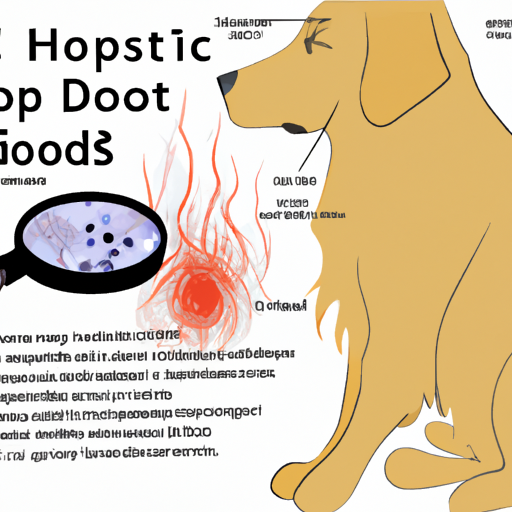What Are Hot Spots?
Hot spots, also known as acute moist dermatitis, are areas of skin inflammation and bacterial infection that can lead to significant discomfort for your dog. These inflamed, raw patches often ooze pus and cause your furry friend to incessantly scratch, bite, or lick the area, further worsening the condition. Understanding how your dog gets hot spots can empower you to prevent the condition and ensure your pet’s comfort and overall health.
Causes of Hot Spots
Hot spots can originate from anything that irritates your dog’s skin and leads to a cycle of itching, scratching, and biting. The causes can be numerous and often depend on your dog’s environment, habits, and health status. Typical causes include:
- Allergies: Dogs can be allergic to a range of substances, from certain foods to environmental irritants such as pollen or dust mites.
- Parasites: Fleas, ticks, and mites can provoke severe itching and lead to hot spots.
- Poor grooming: Dogs with matted or dirty fur are more prone to hot spots.
- Excessive moisture: If your dog’s coat stays wet for too long, it can create an ideal environment for bacterial growth, leading to hot spots.
Understanding these causes can help you to mitigate the risks and keep your furry friend happy and healthy.
Spotting the Symptoms
Early detection of hot spots can make a major difference in your dog’s comfort and the success of the treatment. Keep a watchful eye for the following signs:
- Red, inflamed skin
- Hair loss in the affected area
- Unpleasant odor
- Visible discomfort or restlessness
Treatments and Prevention
Hot spots require prompt attention to prevent further complications. Here’s what you can do:
- Consult a Vet: A professional diagnosis is crucial for effective treatment. Your vet may prescribe antibiotics, corticosteroids, or topical solutions to deal with the infection and inflammation.
- Keep it Clean: Regular grooming and keeping your pet’s skin dry can help prevent hot spots.
- Parasite Control: Use flea and tick preventatives to keep these pesky parasites at bay.
- Address Allergies: If your dog has known allergies, work with your vet to manage them effectively.
| Prevention Method | Description |
|---|---|
| Regular grooming | Keep your pet’s skin clean and dry |
| Parasite control | Use recommended preventatives |
| Allergy management | Work with your vet |
Frequently Asked Questions
Q: Are certain breeds more prone to hot spots?
A: Yes, breeds with dense coats such as Golden Retrievers and Labradors are more susceptible.
Q: Can hot spots spread to other parts of the body?
A: Yes, if your dog continues to scratch and bite, the bacteria can spread.
Q: What if the hot spots don’t heal?
A: If your dog’s condition doesn’t improve after a few days of treatment, you should consult your vet for a follow-up.
Understanding how dogs get hot spots is the first step towards ensuring the well-being of your furry friend. As a responsible caregiver, your watchful eye and prompt action can make a world of difference to your pet’s health.



